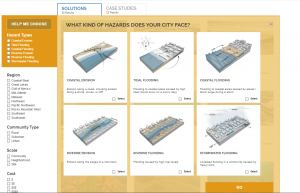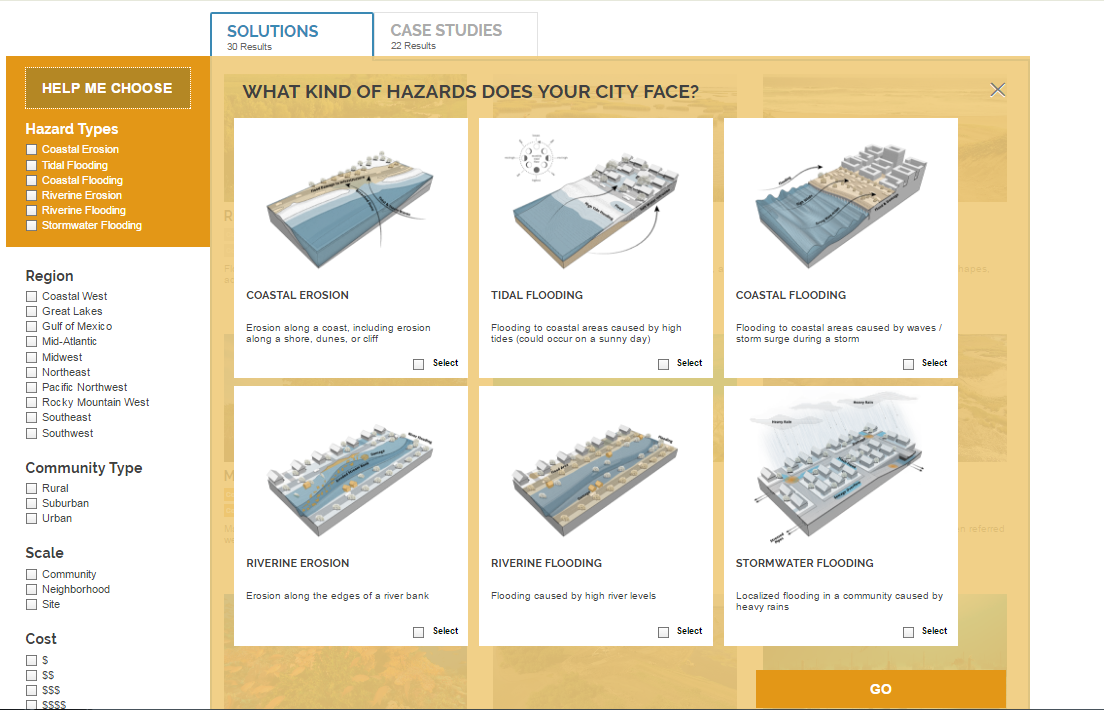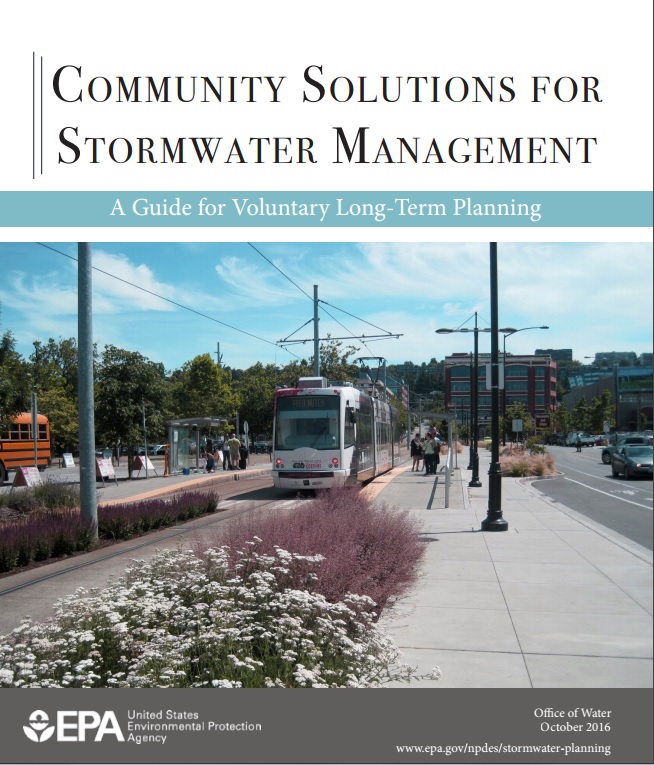
In April, Naturally Resilient Communities released a new website, which includes a tool that matches common flooding hazards to nature-based solutions. Click here to access the website. (Naturally Resilient Communities)
A new partnership, Naturally Resilient Communities (NRC), argues that a simpler, more cost-efficient way to stave off flooding, manage water quality, and even harvest stormwater for reuse, is to complement technology with nature.
“From weather-related disasters and public health crises to needs for economic development, the demands on our communities’ limited resources are growing,” said Nate Woiwode of the Nature Conservancy (Arlington, Va.). “This is where the work of the Naturally Resilient Communities partnership comes in. In many cases, we’ve ‘over-engineered’ our approaches to flood-risk reduction, and in doing so, we’ve lost many of the benefits that nature provides.”
A flood management field guide
In April, NRC unveiled a new website that matches common causes of urban flooding with site-specific, nature-based solutions. The website presents a tool that recommends interventions at site, neighborhood, and community scales. The tool features 22 illustrative case studies from across the U.S., highlights fundraising resources and strategies for nature-based projects, and connects users to additional information.
The website already is equipped with 30 recommended interventions against six common hazard types, including flooding from stormwater. To match a problem with a solution, users first identify the types of flood hazards affecting their city. From there, users can narrow results by specifying which area of the country their project will occupy, the population density of the surrounding community, the scale of the project, and an estimate of the project’s budget.
“Nature-based solutions positively impact a community’s economy because they often create green spaces for ball fields, parks, and other recreational activities that can increase tourism, improve the health of citizens, and attract businesses and professionals,” said James Schwab of the American Planning Association (Chicago). “Because of the multiple benefits they provide, nature-based solutions pay dividends and save money over time.”
Greener cities, cleaner waters

Even smaller, less costly nature-based solutions, such as the rain gardens pictured here, can capture stormwater runoff while also making their surroundings more aesthetically pleasing. The City of Philadelphia is engaged in a sweeping 25-year initiative to manage about 80% of its stormwater runoff using these types of small-scale green infrastructure solutions. (Alisha Goldstein/EPA)
According to the NRC planning tool, effective solutions to the problem of stormwater flooding range from the simple preservation of urban forests and trees to the construction of small projects such as green streets, roofs, and parking lots, bioswales, and rain gardens. With a higher budget, the tool also recommends larger projects such as new waterfront parks.
For extra guidance, the tool points prospective stormwater managers toward Philadelphia Water, which has worked with private developers to add more than 1100 green stormwater projects throughout the city since 2011 under its Green City, Clean Waters program.
The program, through which city agencies expect to spend $2.4 billion to construct and maintain green infrastructure projects over a 25-year period, already creates up to 250 green jobs each year. It has also seen residential land near new projects increase substantially in value, and rising numbers of visitors coming to recreate in revamped parks.
By 2036, the city expects residential property values to increase by about $390 million, while at the same time diverting nearly 8 billion gallons of stormwater from the municipal sewer system each year by adding nature-based infrastructure.
“Naturally Resilient Communities” is a partnership between The Nature Conservancy, the American Planning Association, the American Society of Civil Engineers (Reston, Va.), the Association of State Floodplain Managers (Madison, Wis.), and the National Association of Counties (Washington, D.C.).
Visit the partnership’s website for more information and to explore nature-based solutions and case studies.






